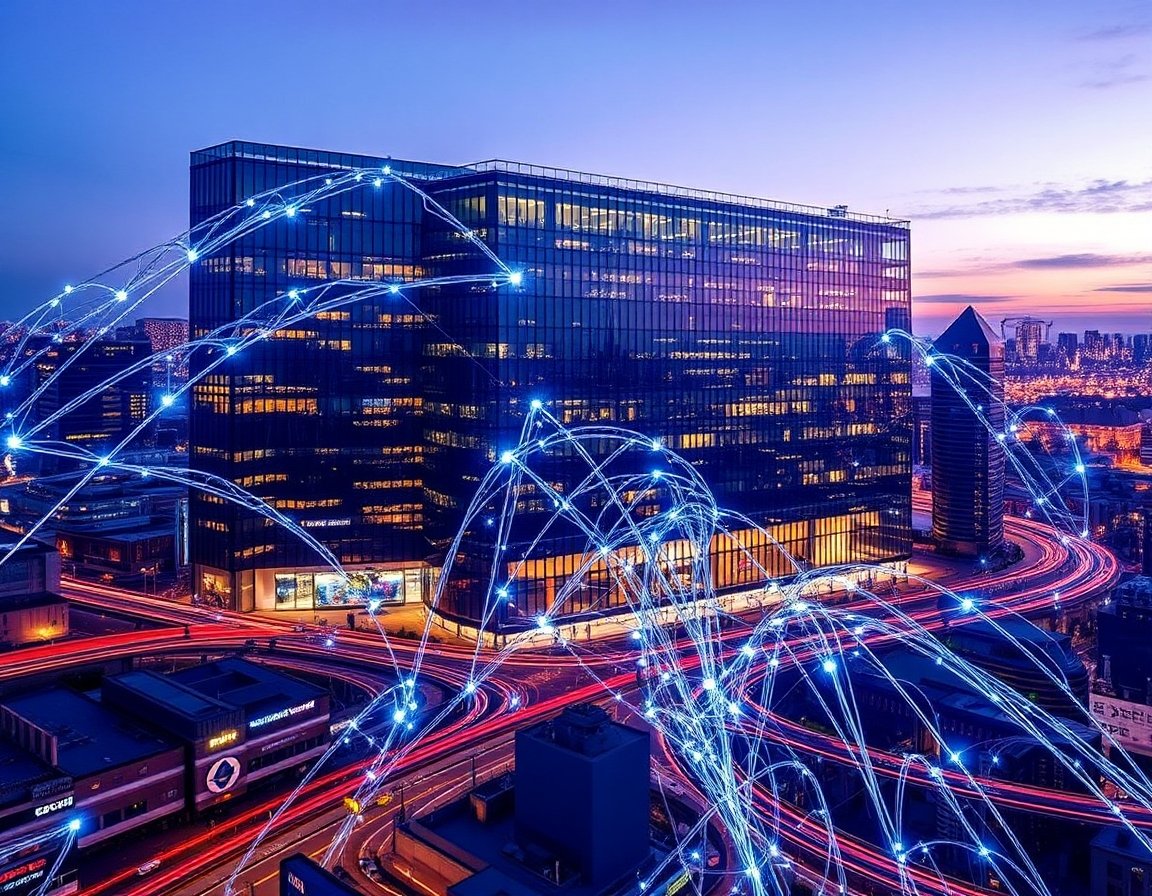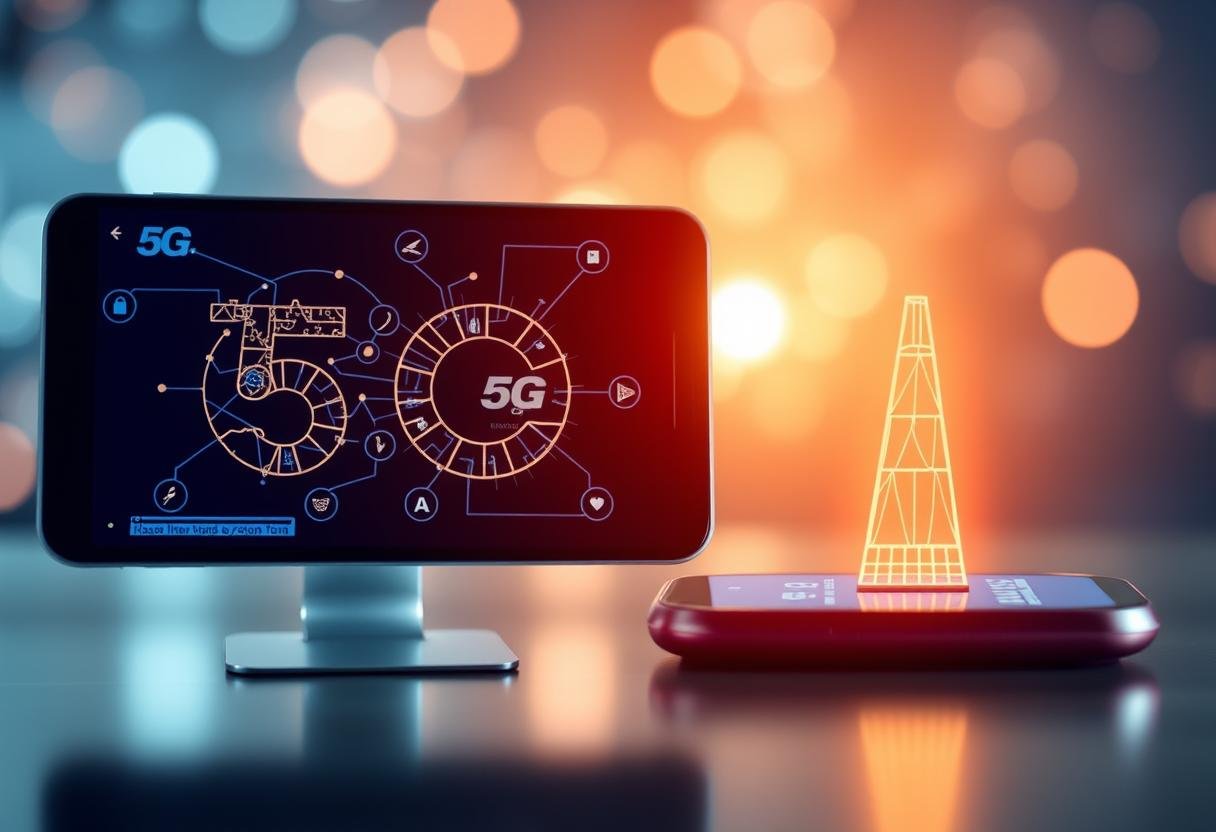This article investigates the travel of portable systems from 1G to 5G, analyzing the key highlights, innovations, and impacts of each era. We will too take a see into the future, where the following era of versatile systems, regularly alluded to as 6G, guarantees to thrust the boundaries of what’s conceivable indeed further.
1. The Birth of Portable Communication: 1G Networks

The to begin with era of versatile systems, known as 1G, was presented in the early 1980s. It was a progressive step forward, empowering versatile voice communication for the to begin with time. In any case, by today’s measures, 1G was very primitive.
Analog Innovation: 1G systems were based on analog innovation, which implied that voice signals were transmitted as persistent waves. This made the innovation helpless to obstructions and brought about in destitute sound quality. In spite of these restrictions, 1G permitted individuals to make phone calls without being fastened to a landline.
Limited Scope and Capacity: 1G systems had constrained scope and capacity, with as it were a few channels accessible for communication. As a result, these systems were inclined to blockage, especially in urban ranges. The to begin with commercial 1G arrange was propelled in Japan by NTT in 1979, taken after by systems in the Joined together States and Europe in the early 1980s.
Large, Costly Gadgets: The portable phones of the 1G period were expansive, bulky, and costly. Known as “brick phones,” these gadgets were basically utilized by commerce experts and were not open to the normal buyer. In spite of their restrictions, 1G phones laid the foundation for the versatile transformation that was to come.
2. The Advanced Transformation: 2G Networks

The move from 1G to 2G stamped a noteworthy jump in versatile innovation, as systems moved from analog to advanced. Propelled in the early 1990s, 2G systems brought a few key advancements that would set the organize for the cutting edge portable experience.
Digital Encryption: One of the most critical headways of 2G was the presentation of advanced encryption. This made communication more secure and less inclined to spying, a basic enhancement over the powerless analog frameworks of 1G.
Improved Voice Quality and Capacity: Advanced innovation permitted for way better voice quality and more proficient utilize of the accessible range, expanding the capacity of systems and empowering more clients to interface at the same time. This change too cleared the way for littler, more reasonable portable phones, making them open to a broader audience.
Text Informing and Information Administrations: 2G systems presented the Brief Message Benefit (SMS), which permitted clients to send and get content messages. This was a groundbreaking include that rapidly got to be a social marvel. Also, 2G systems bolstered fundamental information administrations, empowering clients to get to simple versatile web for the to begin with time.
Global Framework for Versatile Communications (GSM): The GSM standard, created in Europe, got to be the overwhelming 2G innovation around the world. It provided a common stage for portable communication, encouraging worldwide meandering and laying the establishment for the worldwide portable ecosystem.
3. The Rise of Portable Web: 3G Networks
The third era of portable systems, or 3G, was presented in the early 2000s and stamped the starting of the portable web period. With 3G, versatile systems transitioned from being essentially voice-focused to getting to be stages for information communication.
High-Speed Information Transmission: 3G systems advertised essentially quicker information speeds compared to 2G, making it conceivable to browse the web, send emails, and stream media on versatile gadgets. The expanded transfer speed moreover empowered the advancement of portable applications and administrations that were already unimaginable.
Video Calling and Interactive media Informing: One of the key developments of 3G was the capacity to make video calls and send Interactive media Informing Benefit (MMS) messages. These highlights included a modern measurement to portable communication, permitting clients to share pictures, recordings, and other media content.
Universal Versatile Broadcast communications Framework (UMTS): The UMTS standard, based on WCDMA (Wideband Code Division Different Get to) innovation, got to be the most broadly received 3G standard. It provided a more effective utilize of the radio range and upheld higher information rates, making it the spine of 3G systems around the world.
Expansion of Portable Biological system: The approach of 3G systems driven to the multiplication of smartphones, as buyers progressively requested gadgets able of taking full advantage of high-speed portable web. This time saw the rise of notorious gadgets like the Apple iPhone and the dispatch of app stores, which revolutionized the way individuals connecting with their versatile phones.
4. The Period of Network: 4G Networks
Launched in the late 2000s, 4G systems spoken to another major jump in versatile innovation, conveying exceptional speeds and capabilities. The fourth era of portable systems was outlined to meet the developing request for versatile information and back the multiplication of savvy devices.
LTE and OFDMA Innovation: The prevailing 4G innovation, Long-Term Advancement (LTE), utilized Orthogonal Frequency-Division Different Get to (OFDMA) to move forward unearthly proficiency and bolster higher information rates. This empowered download speeds of up to 100 Mbps, making it conceivable to stream high-definition video, play online diversions, and download huge records on portable devices.
All-IP Arrange Design: 4G systems embraced an all-IP (Web Convention) engineering, which permitted for more productive information transmission and decreased inactivity. This move moreover cleared the way for the integration of portable systems with the broader web, empowering consistent network over a wide extend of gadgets and services.
Mobile Broadband and IoT: 4G systems encouraged the development of portable broadband administrations, giving quick and dependable web get to on the go. This was a key enabler of the Web of Things (IoT), as it permitted for the association of a tremendous cluster of shrewd gadgets, from wearables to associated cars and domestic computerization systems.
VoLTE and Improved Voice Quality: 4G systems presented Voice over LTE (VoLTE), which moved forward voice call quality by transmitting voice information over the LTE arrange or maybe than conventional circuit-switched systems. VoLTE moreover permitted for quicker call setup times and the capacity to utilize voice and information administrations simultaneously.
5. The 5G Transformation: A Modern Time of Connectivity

The fifth era of portable systems, or 5G, is right now being rolled out around the world and speaks to a transformative move in versatile innovation. 5G is not fair about speedier speeds; it is about empowering modern utilize cases and applications that were already inconceivable with prior eras of portable networks.
Ultra-Low Inactivity: One of the most noteworthy highlights of 5G is its ultra-low idleness, which can be as moo as 1 millisecond. This near-instantaneous reaction time is pivotal for applications such as independent vehicles, inaccessible surgery, and real-time gaming, where indeed the scarcest delay can have genuine consequences.
Massive IoT Network: 5G systems are planned to bolster the association of billions of IoT gadgets, empowering the broad selection of shrewd cities, mechanical mechanization, and other IoT applications. 5G’s capacity to handle a enormous number of associations at the same time is a key enabler of the IoT revolution.
High-Speed Information and Improved Portable Broadband: 5G systems offer download speeds of up to 10 Gbps, which is 100 times speedier than 4G. This permits for the consistent spilling of 4K and 8K video, immersive virtual reality encounters, and the fast exchange of huge records. Upgraded versatile broadband is anticipated to change businesses such as excitement, instruction, and healthcare.
Network Cutting and Customization: 5G presents the concept of arrange cutting, which permits administrators to make customized virtual systems custom fitted to particular utilize cases. For case, a arrange cut may be optimized for low-latency applications, whereas another cut may be outlined for high-capacity spilling administrations. This adaptability empowers the arrangement of specialized administrations for diverse businesses and applications.
Energy Proficiency and Supportability: 5G systems are outlined to be more vitality efficient than their forerunners, decreasing the control utilization of arrange gear and associated gadgets. This center on supportability is progressively critical as the world looks to decrease its carbon impression and grasp greener innovations.
6. The Long run: What to Anticipate from 6G and Beyond

While 5G is still within the early stages of deployment, the broadcast communications industry is as of now looking forward to the another era of portable systems, known as 6G. Although still in its earliest stages, 6G is anticipated to thrust the boundaries of what’s conceivable indeed encourage, empowering totally unused encounters and applications.
Terahertz Frequencies: 6G is anticipated to use terahertz frequencies, which will offer indeed more prominent transfer speed and lower inactivity than 5G. This will open up modern conceivable outcomes for information escalated applications, such as holographic communication and expanded reality experiences.
AI-Driven Systems: 6G systems are likely to be profoundly coordinates with counterfeit insights (AI), empowering smart systems that can self-optimize, self-heal, and adjust to changing conditions in real-time. This will move forward arrange productivity, decrease operational costs, and improve the client experience.
Advanced IoT and Cyber-Physical Systems: The 6G time is anticipated to see the development of progressed IoT applications and cyber-physical frameworks that consistently coordinate the physical and computerized universes. This might incorporate everything from shrewd cities that react progressively to natural changes to progressed mechanical autonomy and computerization in manufacturing.
Global Network and Inclusivity: 6G guarantees to supply worldwide network, bridging the computerized separate and bringing high-speed web get to to underserved locales. This will be basic in driving financial development and enhancing quality of life in creating nations and rural areas.


